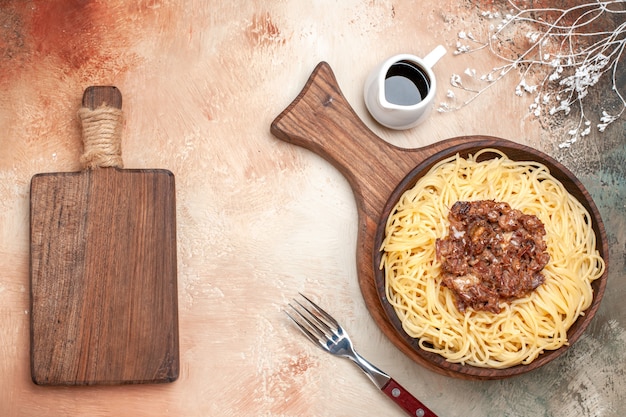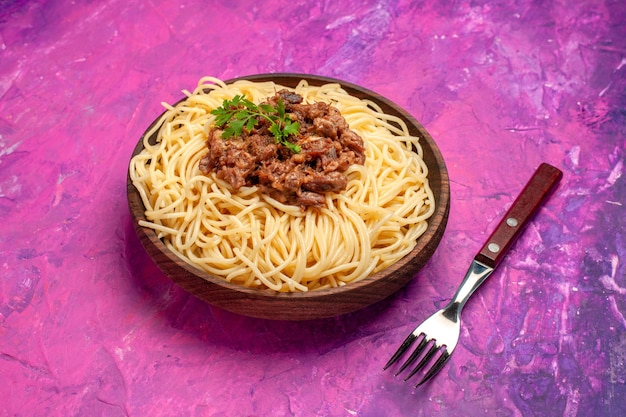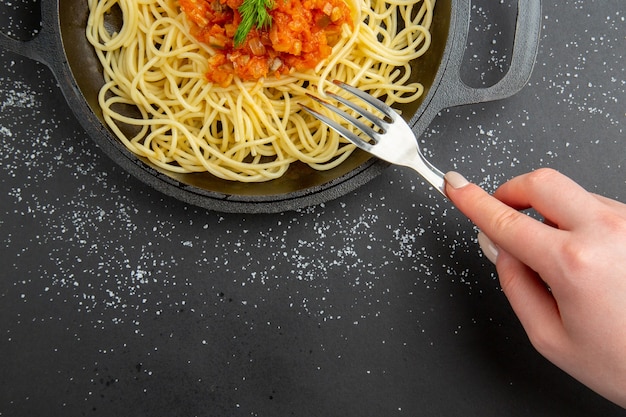spaghetti sauce. Just the name evokes a symphony of flavors: the sweet tang of tomatoes, the savory depth of herbs, and the comforting aroma that permeates the entire house. But there's one ingredient that forms the foundation of this classic dish: ground beef. And oh, how important it is to get that part right!
Over the years, I've spent countless hours in the kitchen experimenting with different methods for cooking ground beef. It's a journey that's led me down winding paths, filled with both triumphs and disasters. But through it all, I've come to appreciate the subtle nuances that make all the difference. So, let me share my wisdom, my trials and tribulations, and ultimately, my recipe for the best ground beef for your spaghetti sauce.
Part 1: The Importance of Choosing the Right Ground Beef

The Meat Matters
Firstly, let's talk about the ground beef itself. Choosing the right kind is crucial. You don't want to be stuck with a dry, flavorless mess, do you? I've learned that lean ground beef, while tempting for its lower fat content, can be a bit of a culinary nightmare. The lack of fat means it can dry out quickly, resulting in a tough, unappetizing texture. Imagine biting into a piece of ground beef that feels like chewing on cardboard – not exactly the culinary experience we're aiming for, is it?
Now, I'm not saying you should go for the fattiest option either. The perfect ground beef for spaghetti sauce is a balance – a blend of lean and fat that adds flavour and moisture without being overly greasy. You want a meat that cooks up juicy and tender, without leaving a pool of fat in the bottom of your pan.
My Go-To Choice
My personal favourite is ground beef that's around 80% lean. It's a happy medium that delivers both flavour and tenderness. This type of ground beef is widely available at most supermarkets, so you shouldn't have any trouble finding it. Just look for packages labeled "80/20" or similar.
The Truth About Fat
Don't be afraid of fat, my friends! Fat is flavour, it's juiciness, it's everything you need for a truly satisfying spaghetti sauce. As the ground beef cooks, the fat renders out, creating a rich, flavorful base for your sauce. It's the secret ingredient that transforms an ordinary dish into something extraordinary. Just think about the delicious bits of browned ground beef that stick to the bottom of the pan - pure flavor! Don't drain away all that deliciousness!
Part 2: Mastering the Art of Browning

The Foundation of Flavour
Now, let's get down to the nitty-gritty – browning the ground beef. This is where the magic happens. It's not just about cooking the meat; it's about developing a deep, rich flavour that permeates the entire sauce. Think of it as the first step in creating a symphony of flavor. The more care and attention we give to browning the ground beef, the more harmonious our spaghetti sauce will be.
Don't Crowd the Pan
One of the biggest mistakes I've made is overcrowding the pan. When you cram too much ground beef into a small pan, it steams instead of browning properly. The result is a bland, watery sauce that lacks that irresistible depth of flavor. Imagine trying to enjoy a symphony with too many instruments all playing at once – it's simply overwhelming and confusing. You want each individual instrument, or in this case, each ingredient, to have its own space to shine.
My advice? Use a large skillet or dutch oven. This gives the meat plenty of room to breathe, allowing it to brown evenly and develop those delicious browned bits we all crave. You'll know it's the right pan when the ground beef is spread out in a single layer, with no overlapping pieces. Remember, we want those flavorful brown bits, not a steaming mess of gray meat.
Patience is Key
Browning ground beef takes time. Don't rush the process! You need to cook it over medium heat, letting it brown slowly and steadily. You'll know it's ready when the exterior is a beautiful, deep brown and the fat has rendered out, leaving those golden bits of goodness behind. Don't be afraid to break up the ground beef with a wooden spoon as it cooks. This helps ensure even browning and prevents sticking.
The Importance of Medium Heat
Using medium heat is crucial for achieving that beautiful, even browning. If the heat is too high, the outside of the meat will burn before the inside has a chance to cook through. And if the heat is too low, the meat will steam instead of browning. We want that perfect balance of heat to create a delicious, flavorful ground beef base for our spaghetti sauce.
Part 3: Building the perfect spaghetti Sauce

The Secret Ingredient: Aromatics
Once your ground beef is browned to perfection, it's time to build the foundation of your spaghetti sauce. Aromatics are key here, adding layers of complexity and depth to the flavour. I like to use a combination of onions, garlic, and a touch of celery. These ingredients are sauteed gently in the rendered fat from the ground beef, releasing their fragrant oils and creating a base for the sauce. Think of these aromatics as the supporting cast in our culinary symphony – they may not be the main attraction, but they play a crucial role in creating a harmonious and complex flavor profile.
The Sauce: Tomatoes, Herbs, and Spices
Now, it's time for the tomatoes. I prefer using crushed tomatoes for their flavour and texture. I've learned that adding a bit of tomato paste to the sauce adds another layer of richness and depth, especially when I'm trying to create a truly traditional, old-school Italian flavor. Tomato paste is like the glue that binds everything together, creating a smooth, velvety sauce. Remember to season your sauce liberally with herbs and spices. Italian herbs like basil, oregano, and parsley are essential for that classic taste. But don't be afraid to experiment with other spices like a pinch of red pepper flakes or a bay leaf. These spices are like the soloists in our symphony – they bring their own distinct flavors to the table and add depth and complexity to the overall taste.
Cooking to Perfection
Simmer the sauce gently, allowing it to meld and deepen in flavor. The longer you simmer the sauce, the more the flavors will blend, and the more the sauce will thicken and become rich and velvety. Don't be afraid to let the sauce simmer for at least an hour, or even longer. Just remember to keep an eye on it, stirring occasionally, to prevent it from sticking to the bottom of the pan. This simmering process is like allowing the instruments in our symphony to play together, creating a beautiful and complex melody.
Part 4: The Finishing Touches
Adjusting the Sauce
Once your sauce has simmered to perfection, it's time to make any final adjustments. Taste the sauce and add salt and pepper to your liking. You may also want to add a bit more sugar or balsamic vinegar to balance out the acidity of the tomatoes. This is where your personal taste comes in. Don't be afraid to experiment until you achieve the perfect balance. This is the moment to fine-tune your symphony, to ensure that each note is in perfect harmony.
The Ultimate Test
Before serving your sauce, try it with a piece of cooked pasta. This will give you a good idea of how the sauce will coat the pasta and how it tastes with the carbs. You may need to adjust the consistency of the sauce by simmering it a bit longer to thicken it or by adding a bit of cornstarch slurry if you prefer a thinner sauce. This is like the final rehearsal before the grand performance – we want to make sure everything is perfect before sharing our masterpiece with the world.
Part 5: Serving Your Masterpiece
The Perfect Accompaniment
Now comes the exciting part – serving your masterpiece! I like to serve my spaghetti sauce with a simple, hearty spaghetti, but there's a whole world of other pasta options to explore. Add a sprinkle of freshly grated Parmesan cheese for a classic touch, or try a drizzle of olive oil for a touch of richness. And don't forget the bread! A crusty baguette or focaccia are perfect for dipping into the delicious sauce. These are the final touches, the decorations that add to the beauty and enjoyment of our culinary symphony.
Sharing Your Creation
The best part of cooking spaghetti sauce is sharing it with others. There's something so special about gathering around the table and enjoying a warm, comforting meal together. So, invite friends and family over, break out the wine, and let the feast begin! Sharing your culinary masterpiece with loved ones is like performing your symphony for a receptive and appreciative audience.
Part 6: Tips for Storing and Reheating
Storage Solutions
After you've enjoyed your spaghetti sauce, you can store the leftovers in the refrigerator for up to 3-4 days. Make sure to transfer the sauce to airtight containers to prevent it from absorbing flavors from other foods in the refrigerator. Keeping your sauce fresh and flavorful is like preserving the notes of your symphony so you can enjoy them again and again.
Freezing for Later
You can also freeze leftover spaghetti sauce for up to 2-3 months. To freeze the sauce, transfer it to freezer-safe containers, leaving about an inch of space at the top to allow for expansion. Thaw the sauce in the refrigerator overnight before reheating it. Freezing your sauce is like creating a recording of your symphony, allowing you to enjoy it at a later date.
Reheating Delights
When you're ready to enjoy your leftover sauce, you can reheat it on the stovetop or in the microwave. If reheating on the stovetop, add a splash of water or broth to prevent the sauce from becoming too thick. If reheating in the microwave, cover the container with plastic wrap to prevent splattering and heat in intervals, stirring occasionally, until the sauce is heated through. Reheating your sauce is like playing back your recording, bringing those flavorful notes back to life.
Part 7: FAQs
Q1: Can I use ground beef that's more than 80% lean?
While it's possible, I wouldn't recommend it. Ground beef that's too lean will likely dry out during cooking, resulting in a tough, dry sauce. Stick with a blend of lean and fat for the best results. Imagine trying to play a symphony with a dry, brittle instrument – it wouldn't produce the beautiful sounds you're hoping for.
Q2: Do I have to brown the ground beef before making spaghetti sauce?
Yes, browning the ground beef is crucial for developing a deep, rich flavor. It's one of the key steps in creating a truly delicious spaghetti sauce. Don't skip this step! Think of browning the ground beef as the opening movement of your symphony – it sets the stage for the rich and complex flavors to come.
Q3: Can I add other vegetables to my spaghetti sauce?
Absolutely! Adding other vegetables, such as mushrooms, peppers, or zucchini, can add a boost of flavor and texture to your spaghetti sauce. You can saute these vegetables with the onions, garlic, and celery, or add them later during the simmering process. These vegetables are like guest soloists in our symphony, adding their own unique melodies and harmonies to the overall composition.
Q4: How long should I simmer the spaghetti sauce?
The longer you simmer the sauce, the more the flavors will meld and deepen. I recommend simmering for at least an hour, or even longer, for the best results. Just keep an eye on the sauce and stir occasionally to prevent sticking. This simmering process is like allowing the instruments in our symphony to play together for a longer period of time, allowing their melodies to blend and create a richer, more complex sound.
Q5: What are some other variations for spaghetti sauce?
The beauty of spaghetti sauce is that it's incredibly versatile. You can experiment with different herbs and spices, add other vegetables, or even create a meatless version using lentils or mushrooms. The possibilities are endless! This versatility is like having a symphony orchestra with a wide range of instruments and musicians, allowing you to create countless unique and beautiful musical compositions.
Part 8: Conclusion
And there you have it - my recipe for the best ground beef for spaghetti sauce. It's a journey, a labor of love, but the result is truly worth it. So, next time you're craving a warm, comforting bowl of spaghetti, remember these tips. They'll guide you to a sauce that's bursting with flavour, rich in texture, and guaranteed to please even the most discerning palate. Happy cooking!
Everyone is watching

How to Cook Frozen Lobster Tails Perfectly: A Step-by-Step Guide
RecipesLobster. Just the word conjures up images of lavish meals, special occasions, and a taste of luxury. But let's...

Pigs in a Blanket Cooking Time: How Long to Bake for Perfect Results
RecipesAh, pigs in a blanket. Just the name conjures up images of those delightful little parcels of crispy pastry en...

Pork Fillet Cooking Time: How Long to Cook It Perfectly
RecipesPork fillet, or tenderloin as it's sometimes called, is a real favourite in our house. It's so versatile, and...

The Ultimate Guide to Tender, Juicy Pulled Pork
RecipesRight, let's talk pulled pork. It's one of those dishes that just screams "comfort food," doesn't it? I mean...

The Ultimate Guide to Cooking Delicious Frankfurters
RecipesLet's face it, we all love a good frankfurter. It's a classic, simple, and always satisfying. But let's be rea...
